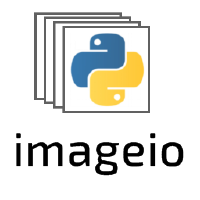imageio.plugins.pyav.PyAVPlugin.iter#
- PyAVPlugin.iter(*, format: str = 'rgb24', filter_sequence: Optional[List[Tuple[str, Union[str, dict]]]] = None, filter_graph: Optional[Tuple[dict, List]] = None, thread_count: int = 0, thread_type: Optional[str] = None) ndarray[source]#
Yield frames from the video.
- Parameters:
- framenp.ndarray
A numpy array containing loaded frame data.
- formatstr
Convert the data into the given format before returning it. If None, return the data in the encoded format if it can be expressed as a strided array; otherwise raise an Exception.
- filter_sequenceList[str, str, dict]
Set the returned colorspace. If not None (default: rgb24), convert the data into the given format before returning it. If
Nonereturn the data in the encoded format if it can be expressed as a strided array; otherwise raise an Exception.- filter_graph(dict, List)
If not None, apply the given graph of FFmpeg filters to each ndimage. The graph is given as a tuple of two dicts. The first dict contains a (named) set of nodes, and the second dict contains a set of edges between nodes of the previous dict. Check the (module-level) plugin docs for details and examples.
- thread_countint
How many threads to use when decoding a frame. The default is 0, which will set the number using ffmpeg’s default, which is based on the codec, number of available cores, threadding model, and other considerations.
- thread_typestr
The threading model to be used. One of
“SLICE” (default): threads assemble parts of the current frame
“FRAME”: threads may assemble future frames (faster for bulk reading)
- Yields:
- framenp.ndarray
A (decoded) video frame.
